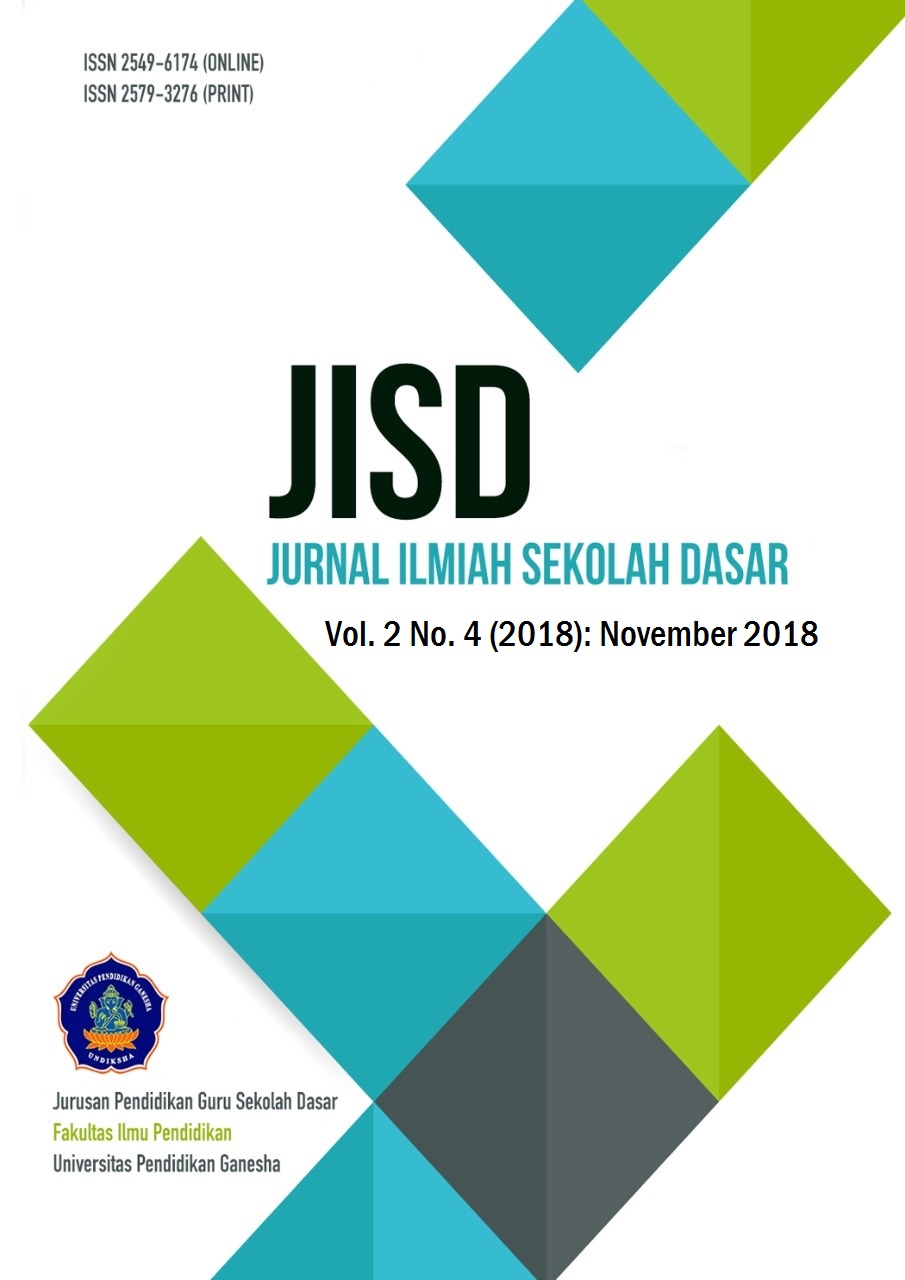Increasing Of Geometry Learning Outcomes Using Savi Method With Fifth Grade
DOI:
https://doi.org/10.23887/jisd.v2i4.16168Abstract
The purposes of this research are to know if the implementation of SAVI method is able to increase the mathematics learning outcomes at SD Negeri Gedangan 01 Tuntang and describing the implementation of SAVI Method. This research type is collaboration classroom action research. The subject of this research is the fifth grade of SD Negeri Gedangan 01 Tuntang consists of 21 students. The research instruments used to collect the data are observation sheets and evaluation test that analyzed by quantitatively. The result shows academic achievement increase to 33% from the pre-cycle to cycle one. In cycle two, the score was significantly increased to 48%. The reason why researcher used the SAVI method is because it focuses on the all sense of students that used in the learning process. Researcher used video interactive, some picture, some activities such as arranged the puzzle and tangram; make the solid geometry from the wood lighter and this activity made students to use their all sense. The condition of the teaching and learning process had been conducive and enthusiast from the all students in grades five. Students have many types of learning style like visual, audio, kinesthetic, and tactile. Thus, when SAVI was implemented students got the chance to learn well in the teaching and learning processReferences
Kesuma, U. P. (2010, September 3). Mengenal Berbagai Tipe Belajar Siswa. Dipetik April 19, 2018, dari Bisnis Guru: http://bisnisguru.blogspot.com/2010/03/mengenal-berbagai-tipe-belajar-siswa_09.html
Kurnianti, S. (2016). Model Pembelajaran SAVI. Dipetik July 30, 2018, dari Repository: http://repository.ump.ac.id/943/3/BAB%20II_SUSI%20KURNIANTI_MATEMATIKA%2716.pdf
Muchyidin, A., & Kusniya. (2012). Pengaruh Penerapan Model Pembelajaran Savi(Somatic, Auditory, Visual, And Intellectual)Terhadap Kemampuan Berpikir Geometri Siswa. Dipetik July 30, 2018, Dari Academia.Edu: Http://Www.Academia.Edu/27967999/Pengaruh_Penerapan_Model_Pembelajaran_Savi_Somatic_Auditory_Visual_And_Intellectual_Terhadap_Kemampuan_Berpikir_Geometri_Siswa_Studi_Eksperimental_Terhadap_Siswa_Kelas_VII_SMP_Negeri_1_Gegesik_Cirebon_Pada_Pokok_Bahasan_Ba
Rofiah, F. (2015, April 07). Pengertian Pendekatan SAVI. Dipetik August 08, 2018, dari EUREKA PENDIDIKAN: https://www.eurekapendidikan.com/2015/04/pendekatan-pembelajaran-savi-somatis.html
Sani, R. A. (2014). Inovasi Pembelajaran. Jakarta: PT Bumi Aksara. BIBLIOGRAPHY l 1057
Slameto. (2015). Metodologi Penelitian dan Inovasi Pendidikan. Salatiga: Satya Wacana University Press.
Tyas, E. N. (2014). Peningkatan Keterampilan Proses Dan Hasil Belajar Subtema Tugasku Sehari-Hari Di Rumah Menggunakan Model Pembelajaran Savi Pada Siswa Kelas Ii Sdn 1 Bolo. Scholaria: Ejournal UKSW, 69-70.
Van De Walle, J. A. (1994). Elementary School Mathematics: Teaching Developmentally. Second Edition. New York: Longman.
Wardani, N. S., & all, e. (2012). Asesmen Pembelajaran SD. Salatiga: Widya Sari Press Salatiga.
Downloads
Published
How to Cite
Issue
Section
License
Authors who publish with the Journal Ilmiah Sekolah Dasar agree to the following terms:
- Authors retain copyright and grant the journal the right of first publication with the work simultaneously licensed under a Creative Commons Attribution License (CC BY-SA 4.0) that allows others to share the work with an acknowledgment of the work's authorship and initial publication in this journal.
- Authors are able to enter into separate, additional contractual arrangements for the non-exclusive distribution of the journal's published version of the work (e.g., post it to an institutional repository or publish it in a book), with an acknowledgment of its initial publication in this journal.
- Authors are permitted and encouraged to post their work online (e.g., in institutional repositories or on their website) prior to and during the submission process, as it can lead to productive exchanges, as well as earlier and greater citation of published work. (See The Effect of Open Access)










